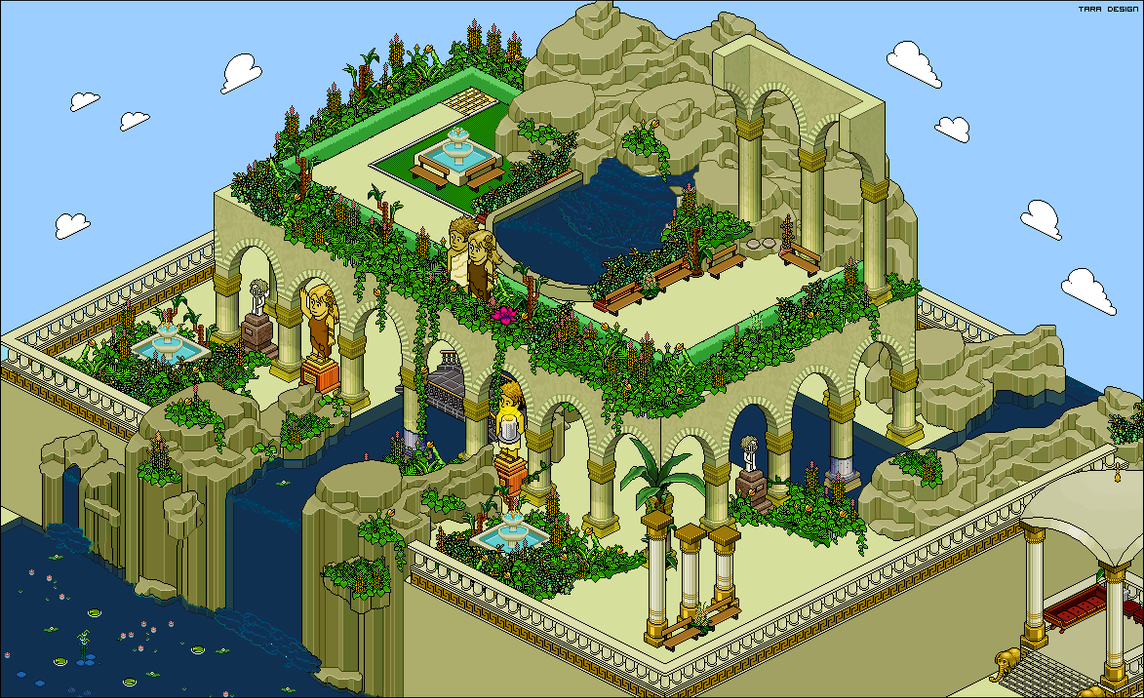Amazing Building - Babylon Hanging Garden

The Hanging Gardens of Babylon
evoke a romantic picture of lush greenery and colorful flowers
cascading from the sky. The grandeur of their sight must have been
awe-inspiring, which is why Herodotus
would have considered them one of his 7 Wonders of the Ancient World.
However, not only are the Hanging Gardens of Babylon not standing today,
but their entire existence is debated. Because of the lack of
documentation of them in the chronicles of Babylonian history, many
doubt they were ever there. They may have been merely a figment of
ancient imaginations, a story to be told in the annals of ancient myth
and history.
In ancient writings
the Hanging Gardens of Babylon were first described by Berossus, a
Chaldaean priest who lived in the late 4th century BC. In his book
Babyloniaca, written around 280 BC, he describes the gardens and
attributes them to the great Babylonian king Nebuchadnezzar II. Many other Greek
historians went on to provide detailed descriptions of the gardens,
citing either Berossus' work, or from accounts of other ancients.
According to these ancient sources, Nebuchadnezzar had the Hanging
Gardens built around 600 BC for his wife Amytis. Amytis was originally
from media, and had
married Nebuchadnezzar in an arrangement to further political ambitions,
which was not uncommon for the time. Amyitis was homesick for her
verdant and mountainous home, and quite depressed living in the flat and
arid Babylon. Thus an elaborate garden was constructed to replicate her
lush homeland and cheer her up.
The Hanging Gardens did not actually hang at all. They were made up of a
simulated mountain with rooftop gardens. They would have likely been
multi-level terraces supported by baked brick columns.
These columns would have been filled with dirt to allow large plantings
and trees to root and grow. The effect of the plants hanging down over
the years likely gave the effect of a lush mountain landscape, seemingly
hanging in mid-air. It would have been spectacular to behold.
Recent archaeological excavations of the palace in Iraq have uncovered
evidence of a building with vaults and a well (for irrigation?) nearby.
However, the location of the palace complex contradicts where Greek
historians placed the Hanging Gardens, which was on the banks of the
Euphrates River. The palace excavations are simply too far away. There
is promising news, though. There have been recent excavations on the
banks of the Euphrates River of some substantial 25 meter-thick walls. Could these have been part of the Hanging Gardens of Babylon?
Though some believe that the Hanging Gardens never existed, it is not
outside of the realm of possibility that they were real. The technology
of the time would have allowed for their construction. That does not
explain the lack of contemporary documentation, however. But why would
later historians spend so much time describing this masterpiece of
ancient history if it did not exist in at least some physical form?
source :
http://www.ancient.eu.com/article/129/
http://www.deviantart.com/morelikethis/117290606/digitalart/pixelart/scenes/iso?view_mode=2#skins
source :
http://www.ancient.eu.com/article/129/
http://www.deviantart.com/morelikethis/117290606/digitalart/pixelart/scenes/iso?view_mode=2#skins
Tidak ada komentar:
Posting Komentar